Children in limbo in the midst of immigration enforcement debate
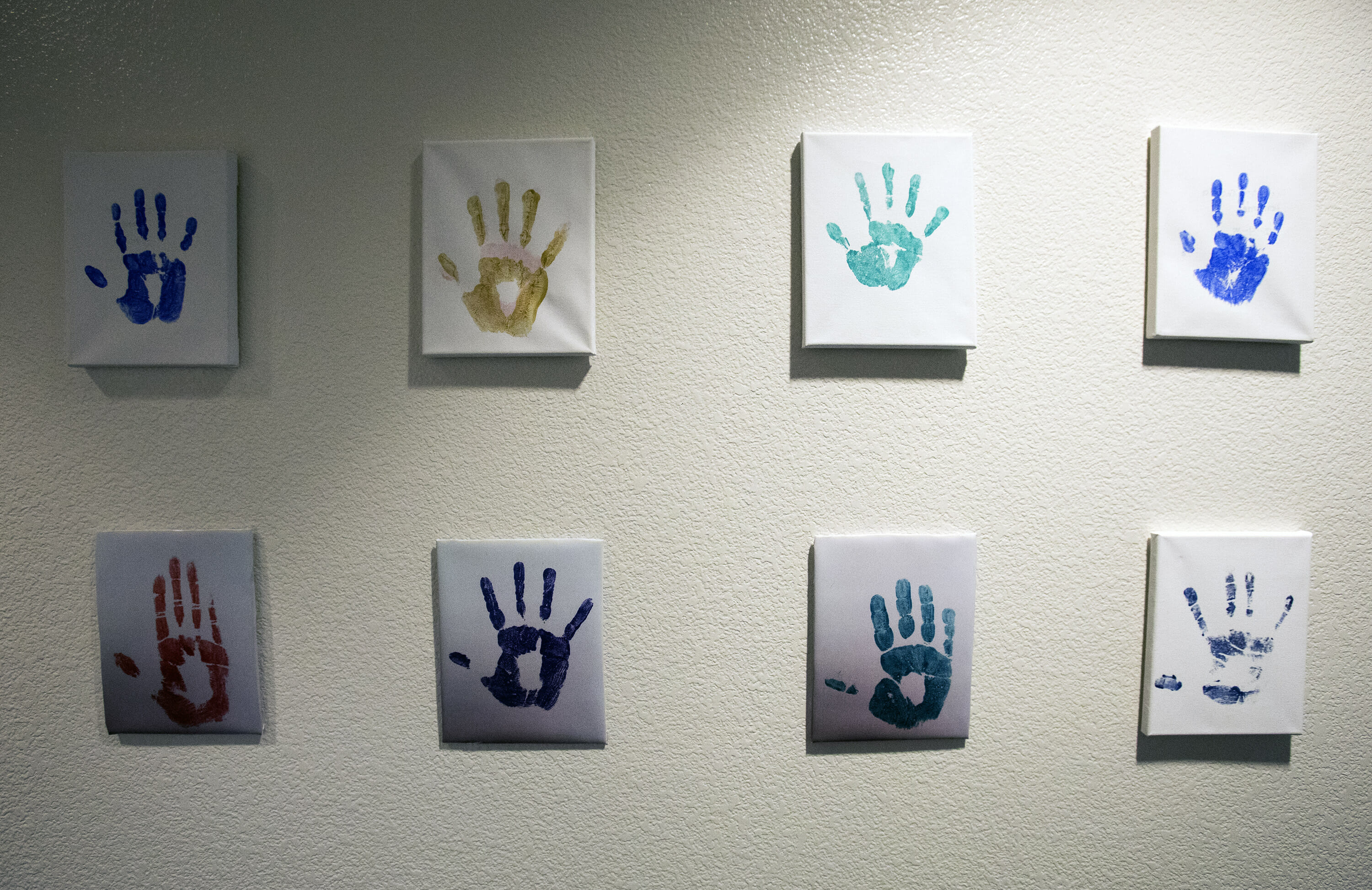
This story has been translated and edited from its original Spanish version.
They are fleeing from poverty and violence in Central America and arriving alone at the U.S. border in search of a better future. Or they were born here, but their parents are undocumented immigrants at risk of deportation. Either way, they are children who must live with the reality of U.S. immigration law and its enforcement.
Why do families allow some of them to travel alone? Why take such risks to cross the border only to risk being deported? What resources are available in Nevada to help? What kind of future awaits in "the land of opportunity”?
On January 25, President Donald Trump signed executive orders on immigration and border security and on February 17, John Kelly, Secretary of Homeland Security, made public the memos that were required to implement them.
But Trump’s executive orders really did not change anything for unaccompanied migrant children, according to immigration attorney Laura Barrera, an Equal Justice Works AmeriCorps legal fellow at the UNLV Immigration Clinic.
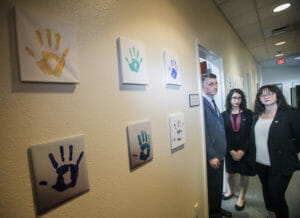
"What we try to do is keep an eye on the memo from the Department of Homeland Security (DHS) to make sure that families are protected,” said Barrera, referring to a DHS memo titled “Implementing the President's Border Security and Immigration Enforcement Improvements Policies”.
In addition to the coming and going of documents, discussions, and immigration policies, there are children whose past and future is divided by a border.
“Carmen,” “Rosa” and “Lucia”
"Carmen" can barely hold back tears when she recounts her daughters’ journeys to the U.S. two years ago. "Rosa," who is now 17 years old, along with her sister "Lucia," age 11, traveled from El Salvador to the U.S-Mexico border without their mother or any family to help them except for a few cousins and a group of people who were strangers.
Carmen, who asked to use pseudonyms for herself and her daughters during her interview with The Nevada Independent, arrived in the U.S. eight years ago hoping she could eventually help her family in El Salvador. She left her two daughters in the care of their grandmother.
Carmen had been making a living selling oranges, but abandoned it because the maras (gangs) were threatening to make “merchants” like her pay heavy rent and subjecting members of the community to violence. Her family’s security and financial situation was so affected by this that she decided to travel to Phoenix, AZ, where she still resides.
During a June visit to Las Vegas to process a document at the Consulate of El Salvador, Carmen said it was difficult to leave her two small children in their grandmother’s care, and also difficult to face the prospect of bringing them all the way to the U.S. from El Salvador, even though the situation there was deteriorating because of ongoing violence.
Ultimately, it was their grandmother who decided it was better to send the two girls to the U.S. She had heard the maras were beating youngsters, raping girls and assaulting or killing people at random. She was afraid for the girls.
"They had never left El Salvador,” Carmen tearfully said. "It was a difficult decision because I could not sleep, I did not eat, I asked God to protect them so that nothing would happen to them. I knew there were many dangers along the way. I had passed them when I came to this country.”
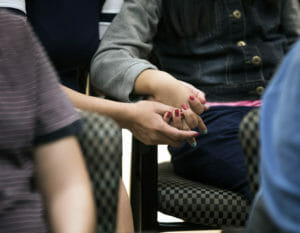
But the risk of the long journey, bringing her daughters here without documents, and paying and trusting one of her mother’s acquaintances to accompany them, was worth it to Carmen. The contact was made in El Salvador. Money was needed for the accompanying friend as well as to pay someone in Mexico a fee to help them across the border.
"Money was given to a person to go to the border, and he had to pay in Mexico so they could be brought across,” Carmen said. "Between the expenses during the trip and the plane tickets later, I paid about $12,000 for the two girls.”
Carmen and her husband earn the living that enabled them to bring their daughters to the U.S. by painting houses.
Rosa said she didn't think twice when she was told she would go to the U.S. The maras had asked her for money and had killed some of her schoolmates. It gave her the courage to embark on the journey with her little sister. She dreamed about being reunited with her parents.
"I knew my 'ma' had come over here to provide a better life for us. We knew it was dangerous, but it was for our own well-being. That's why I will never complain about anything,” said Rosa.
Rosa does not have fond memories of her journey, though. One time the group with which they traveled spent nearly 15 days locked up without being able to even look out a window. On another occasion they spent a day near a river in the cold, hungry and with no drinking water.
"I said that God was going to save us, that everything would be fine, and that’s how it was,” Rosa said.
Carmen said part of what gave her the courage to bring her daughters across the border without a guardian was the stories she had heard about U.S. immigration taking children safely into custody and assisting them.
"They were giving the opportunity to reunite children with their parents, and I said: 'I’m going to take the opportunity so that my daughters can cross', because I knew people who had done it that way with their children,” Carmen explained.
Carmen said she felt alive again when she received a call from the immigration center where the girls were taken after they crossed the border. The center’s staff even recommended lawyers to her, so she could begin the process to gain legal stay for her children.
Counting pages on the calendar until the day they would be reunited with their parents, Rosa and Lucia spent a month at the U.S. immigration center.
"There were a lot of children from Guatemala and Honduras,” Rosa recalls. "When we arrived they gave us a test to see what we had learned in our country, and classified the grade we were going to be sent to. We had teachers who gave us classes.”
Although she sometimes felt sad because she was surrounded by strangers, Rosa said they treated the children well at the center because they had counselors, they were taught English, and they were given breakfast, lunch, dinner and snacks.
Rosa remembers the day when finally she and her sister were reunited with their mother. Between tears, hugs and immigration procedures, they began a new life.
---
Two years have passed since that day. While the family is now together, they are waiting with uncertainty to see what will happen on July 12, when Rosa and Lucia, for the third time, will stand before a judge to determine if they will obtain documents that will allow them to stay in the U.S.
Carmen’s lawyer, who charged her $4,000 to take on both girls’ cases, has told her he feels optimistic.
"Now they are going to say if they are going to receive their permit,” Carmen said. She also has to pay for her daughters’ permits if they get them.
"If it's for my daughters, it’s worth it,” she said.
They continue to arrive at the border
In spite of the warnings issued by the U.S. government in 2014, there was a continued influx of unaccompanied children arriving at the border between the U.S. and Mexico. It began to attract the attention of national and international media outlets.
Between October 2013 and May 2014, CBP detained 46,188 children under the age of 17 who were coming into the U.S. from Central America, according to El País.
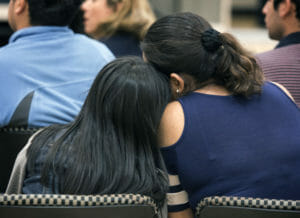
In 2015, NBC News reported that more than 10,000 unaccompanied minors had been apprehended at the U.S. borders in the prior two months, while The New York Times reported that President Obama was referring to this issue as an "urgent humanitarian situation.”
A report published by the Vera Institute of Justice indicated that the Office of Refugee Resettlement (ORR) and DHS were applying the following definition of a ‘foreign child,’ also used in the Homeland Security Act:
"A foreign child is a child who has no legal status in the U.S., is less than 18 years of age, and has no parent or legal guardian in the country present or available to provide care and physical custody.”
Neither the risks of traveling nor any of the recent immigration measures announced by the U.S. government have stopped the flow of immigrants over the border. A press release issued by CBP indicates that in 2016 there were a 408,870 arrests of undocumented persons at ports-of-entry at the Southwest U.S. border.
The CPB statement points out that in 2014, for the first time, the number of families and unaccompanied minors from Central America exceeded the number of Mexicans trying to cross the border illegally, a pattern that was repeated in 2016.
A report from UNICEF that was published last year emphasizes their view that there is a humanitarian need to provide protection for minors in their countries, during their journey, and upon arrival at the border.
Once on American soil
When undocumented children arrive at the U.S. border, specialized immigration procedures begin. Alone and without papers that allow them to legally stay in the country, they remain in the ORR’s custody while the organization tries to reunite them with someone in the U.S., according to Arlene Amarante, a fellow with Thomas & Mack Legal Clinic at UNLV’s William S. Boyd School of Law.
"There are centers where the children are psychologically evaluated, they feed them, and this is where they can sleep,” said Amarante. "But this is a desperate situation for the children, because they do not know how long they are going to stay here, if they are going to leave, or if they are going to see a judge.”
The chances that the authorities will approve the children’s stay on a permanent basis depend on whether they apply for a legal remedy, said Amarante. Adequate legal representation is needed for this to occur.
"It’s not just standing in front of the judge, and if the judge likes the child, the child can stay,” she said.
Free assistance
Some of these children in Nevada are being represented by attorney Laura Barrera at UNLV’s Immigration Clinic via the Edward M. Bernstein and Associates Children's Rights Program, which is overseen by UNLV law professor Michael Kagan.
Barrera said it is not possible to determine exactly how many cases they handle annually because an immigration process can take years to reach a final verdict, although the number remains at about 150. As soon as cases are resolved, they always receive new ones, she said.
There has been a large wave of immigrants coming in from Central America that is almost as large as the one in 2014, according to Barrera. The Immigration Clinic at UNLV continues to receive more requests for aid than they can handle.
Most of the clinic’s services are offered in Las Vegas, but they also follow up on cases of people who moved from this city to another one, or who are within the jurisdiction of the Immigration Court of Las Vegas but they do not live here, such as those who now live in Utah.
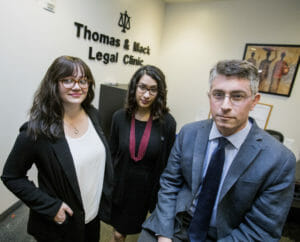
Where do all these minors come from and why are they leaving their countries? According to Kagan, they mostly arrive from Guatemala, Honduras, and El Salvador.
"Every story is a little different, but these children often have witnessed horrific violence, or they themselves have been threatened,” Kagan said. "Sometimes it was their parents’ decision or they decided for themselves that the only way to stay alive was to travel north.”
Kagan says a donation of $250,000 made this year by the law firm of attorney Ed Bernstein will allow the program to continue for five years.
The law in Nevada
On Feb. 13, during the legislative session, Democratic Assemblyman Edgar Flores introduced AB142, which sets out provisions related to children who are looking for an immigrant youth special status from USCIS. The new law will go into effect on Oct. 1 and authorizes a court to assign them a legal guardian.
Kagan said the law ensures that Nevada family courts work in sync with the immigration laws so that when Congress asks the Family Court to assess a case of child abuse and neglect of an immigrant child, family judges will know what they can and should do.
"In our system, if the courts of Nevada do not evaluate what is in the best interest of the child, nobody will do it in an immigration case,” Kagan said. "And they might have deported a child back to a horrendous situation because that will be the only court that asks what benefits the child. So this bill ensures some consistency throughout the state, and how family courts deal with these cases.”
Parents, children and deportation
Since Trump signed his executive orders, undocumented parents most often ask how they can be prepared in case they are deported, as well as how can they protect their children who remain in the U.S., according to Jocelyn Cortez, an immigration attorney with The Castroverde Law Group.
Over the past four years, her firm has assisted 50 to 75 cases of children arriving alone to the U.S. border.
"Here at the office, we are doing a couple of things: requesting consent so that the child will be able to travel, and the second one is getting consent for guardianship,” Cortez said. "It is something legal and specific in the world of family law, but it doesn't have to be an adoptive parent.”
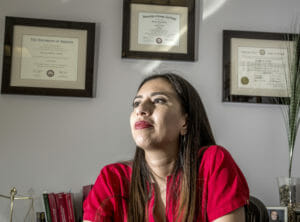
Cortez also indicated that parents at risk of deportation who prefer to leave their children in the U.S. must think about the children’s peace of mind and be prepared in case they face a possible crisis situation.
"Talk to a family member or a friend who wants to be like a guardian,” Cortez said. "It would not be like an adoption for the children who stay here, because to be able to do that, parents must give up their rights, and that is very dangerous. So this is about tutoring or giving consent to a guardian who can be prepared in case this happens, and this would only take effect if the person is expelled.”
"What would happen to my daughters?"
Families on both sides of the border share a common concern: the safety and well-being of children.
Parents fleeing violence or poverty in their home country can either leave their children behind in case they are later deported, or take them along and hope they won’t be. Parents who cannot yet flee can either keep their children with them, risking illness and hunger, violence and death, or send them to the U.S. in an attempt to protect them.
Such was the case for a mother who cleans houses for a living and who preferred not to provide her name during a recent interview at a community center in Las Vegas.
Originally from Puebla, Mexico, this working mother recalled her journey to come to this city, where she has lived for the past 12 years. Despite all the "scary moments" she faced, as she calls them, she has two daughters and is convinced that coming to the U.S. was still the best option for her family.
"I took a risk to come here to be able to help my parents due to the situation in Mexico," she explained. "I was two months pregnant when my husband and I came here. I walked seven days in the desert, and I ate other people’s leftovers. I fell in the ditches because there were so many holes.”
This mother said the federal government’s recent immigration measures has her thinking about what her daughters’ futures would be like if the authorities arrest them. "What would happen to my daughters? God forbid, that can happen and everything could change.”
Seeing so many people writing comments on social media saying they’re afraid of being deported, she decided to process Mexican citizenship documents for her girls. "If I go, I have to fight for my daughters, because that’s where they also come from,” she said.
Feature photo: Hand prints of unaccompanied children that the Thomas & Mack Legal Clinic has helped hang in the hallway on Wednesday, March 15, 2017. (Jeff Scheid/The Nevada Independent)
